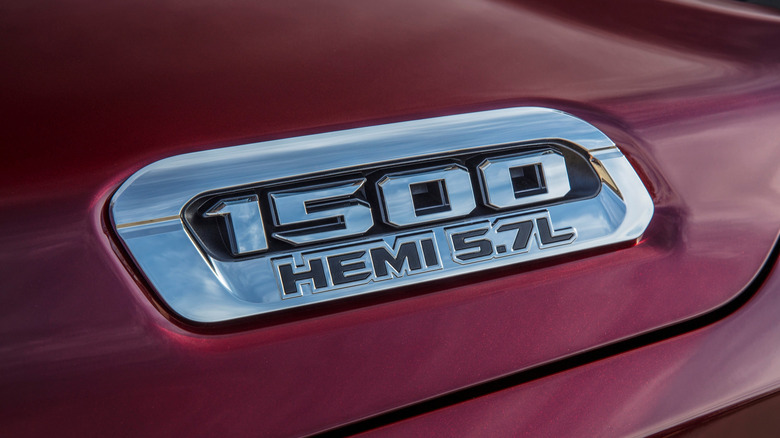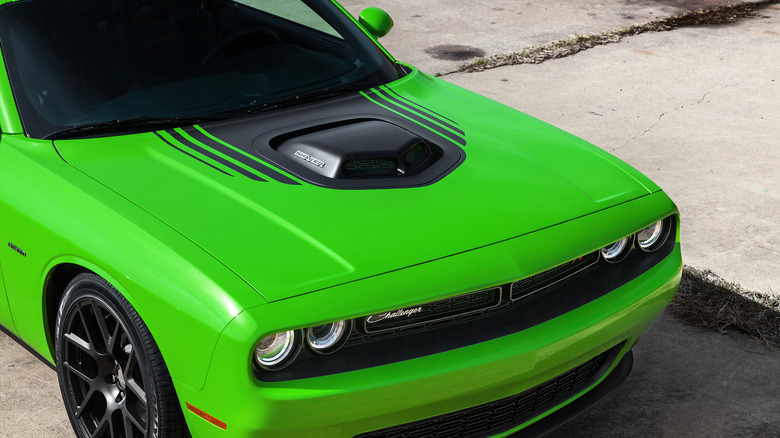Chrysler 5.7 HEMI: Where Are The Engines Made & How Much HP Do They Produce?
Chrysler's 5.7 HEMI is one of America's favorite engines. Since launching in 2002 as part of the third generation of HEMI engines, it has gone on to feature on muscle cars, SUVs, half-ton pickup trucks, and even heavy-duty pickup models. This adaptability and characteristic strengths, such as its 300-plus horsepower and strong torque delivery, made the 5.7 HEMI V8 one of the most respected and iconic engines in Chrysler's range. Despite that, Stellantis had conceived a future without HEMI V8 engines, having decided to stop offering them in its vehicles due to tightening emissions rules.
For most of its existence, Chrysler built the 5.7-liter HEMI V8 in its Saltillo engine plant in Ramos Arizpe, Mexico. Along with the 5.7-liter mill, the facility also builds the Stellantis 3.0-liter Hurricane inline-6 engine used in the Ram 1500, Wagoneer L, and Grand Wagoneer L, as well as the 6.4-liter HEMI V8 found beneath the hoods of the heavy-duty Ram 2500 and Ram 3500.
Chrysler has decided to bring back the 5.7 HEMI V8 for 2026 owing to popular demand. However, reports suggest that Stellantis will move HEMI engine manufacturing out of Mexico to its Dundee engine plant in Michigan, a 275-acre facility that so far has been responsible for the Chrysler 2.4 Tigershark inline-4 and 3.6 Pentastar V6 engines. But with both engines having made their last journeys off the production line in 2023, Stellantis is now preparing the Dundee plant to build a range of new inline-4 powerplants. These include a 2.0 Hurricane4 EVO twin-turbo inline-4 and 1.6-liter turbocharged inline-4 engine, which will have direct fuel injection and support hybrid-electric vehicles.
The 5.7 HEMI's horsepower output through the years
The HEMI 5.7 V8 horsepower varies depending on implementation, with the least powerful cars generating 335 hp, whereas the most powerful models get up to 395 hp. Early versions of the engine made 345 hp in the Ram 1500, 2500, and 3500 (climbing to 355 hp in the Ram 2500 and 3500 for 2009), while the Jeep Grand Cherokee, Dodge Durango, and Chrysler Aspen had a factory detuned 335-hp variant. One year later, the Chrysler LX platform debuted alongside increased power levels, with the 5.7 HEMI in the likes of the Chrysler 300C, Dodge Magnum R/T, and Dodge Charger R/T tuned to either 340 or 350 hp.
The same year, Chrysler added a Multi-Displacement System (MDS) to the 5.7-liter HEMI V8 to improve fuel efficiency. MDS is a cylinder deactivation technology that disables up to four cylinders, making the engine operate as a four-cylinder unit under light load conditions. In 2009, Chrysler made major changes to the 5.7 HEMI, reworking the cylinder for improved airflow. The engine also got a new block, a revamped combustion chamber, an aggressive camshaft profile, and a variable camshaft timing system that helped raise both power and fuel economy. These changes boosted output to 390 hp (later climbing to 395 horses) in the Ram 1500 and 372 hp in the 2009 Dodge Challenger R/T. At the lower end of the revised 5.7 output scale, the Jeep Grand Cherokee and Jeep Commander were initially equipped with a 357-hp version of the engine, but Jeep later increased the Grand Cherokee's output to 360 hp for 2011.

